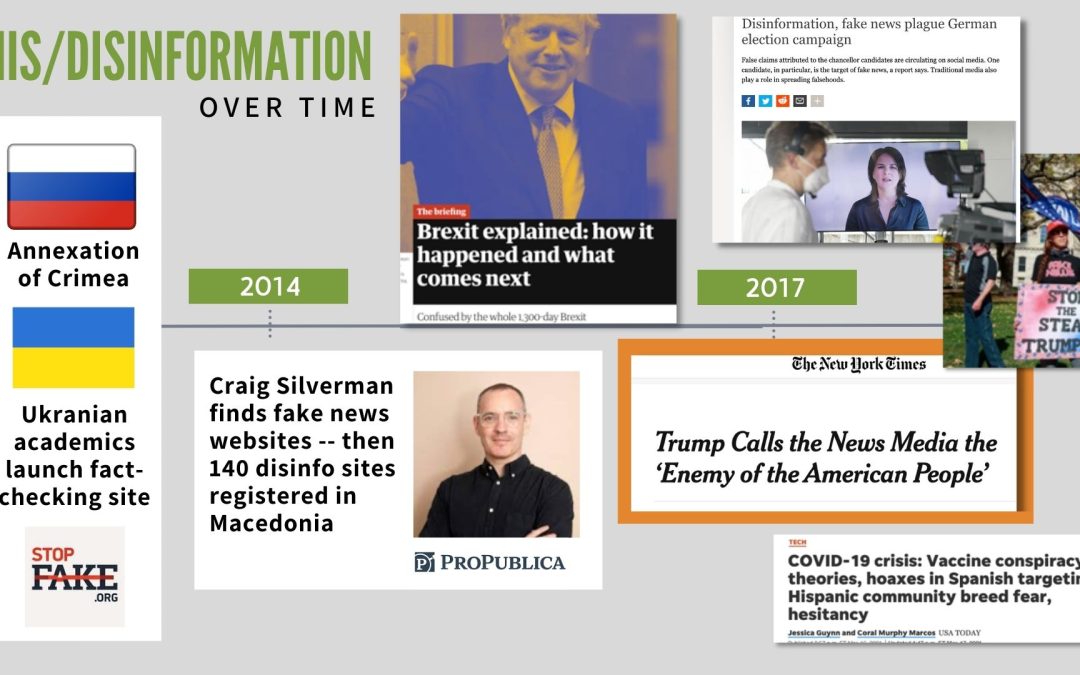Interpersonal relationships are key to countering false and misleading information, advised Deanna Troust, founder and president of Truth in Common, during IABC DC Metro’s “Misinformation: How We Got Here, and What We Can Do About it.” The virtual gathering occurred on February 7.
Deanna explained communications professionals are especially needed in the mis/disinformation space as they are experts in human behavior, information channels, and how news and discussion influences others. Communicators are encouraged to notice people’s emotional reactions to information, check sources, and watch and listen to outlets they normally don’t consume as a form of market research.
“I believe human-centered approaches are vital or we’re not going to turn the ship,” she said, adding, “It can’t just be on media platforms, on policy makers, on the PhDs — it’s on every one of us. We, as communicators, can take a stand for the truth simply by being polite and asking questions. If we can all do that, we’ll be in a much better place.”
The Truth in Common website provides an overview of the nonprofit’s goals and objectives: “Truth in Common translates disinformation and social division research into skills people can use at home, at work, and in the community. Through workshops, a newsletter, talks and partnerships, we create safe, brave spaces where people learn about information manipulation, how to access the information they need and feel comfortable talking again — respectfully.”
Some additional insights Deanna shared during the event:
1) Disinformation vs. Misinformation: Misinformation is false information that spreads innocently without intent to mislead. Disinformation is the intentional sharing of falsehoods to cause confusion or harm or to make money.
An example of misinformation is the widespread sharing of The Great Replacement theory, a far-right conspiracy that suggests white people are being replaced demographically and culturally with non-white people. This erroneous notion led to deadly violence, as seen in the 2022 mass shooting at a supermarket in Buffalo, New York. An 18-year-old killed ten people, all of whom were Black. The perpetrator cited replacement theory as his motivation for carrying out the attack.
As far as disinformation, Russian President Vladimir Putin used it extensively to justify invading Crimea in 2014 and Ukraine in 2022. He also employed it to meddle in U.S. elections, notably the 2016 presidential race.
2) The 2016 Election Brought Mis/Disinformation to the Forefront: Mis/disinformation became a widespread issue in the U.S. after the 2016 election where quality sources of information were being discredited at the highest levels, including by former President Donald Trump. Large segments of the American public began to doubt what was being reported in mainstream news outlets, and the distrust has only grown as outlets and reporters continue to fall prey to what Deanna calls the current “trash and attack” culture.
3) Agreement on Mis/Disinformation: According to a 2022 Disinformation in Society report issued by the Institute for Public Relations, more than two-thirds of Americans on both sides of the political aisle believe mis/disinformation are “major problems” in society.
4) Mis/Disinformation is an Equity Issue: A 2022 Latino Anti-Disinformation Lab Poll conducted by Vote Latino reported 66% saw false information about Democrats tampering with ballots. And of those surveyed, 33% said it was “true” or “probably true.” Spanish speakers are often deliberately targeted with misinformation. When people are fed false and misleading information repeatedly, some will eventually come to believe it.
5) News Deserts Can Lead to Mis/Disinformation: Many don’t know what’s happening in their community, as local journalism outlets have dried up in recent years. When this happens, citizens may turn to less credible, exclusively national level or social media sources of information — or exist in a news void. Meanwhile, a study conducted by NYU’s Cybersecurity for Democracy found misinformation on Facebook received six times more clicks than factual news in the months surrounding the 2020 election.
To learn more about Truth in Common and its work:
• Visit truthincommon.org for additional information about the initiative and workshop series.
• Sign up for the Truth in Common newsletter for breaking news from the mis/disinformation space, analysis on disinformation campaigns, tips and stories about civil discourse and more.
• Email Deanna at dtroust@3storiescomm.com if you’d like to bring a Truth in Common talk or workshop series to your organization or community group.
• Connect with Deanna on LinkedIn or Twitter.
Thank you to Deanna for conveying a trove of material. Much appreciation also goes out to the IABC DC Metro board — including Giuseppe Laviano and Sue O’Hora — for hosting the event.
